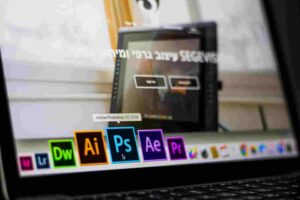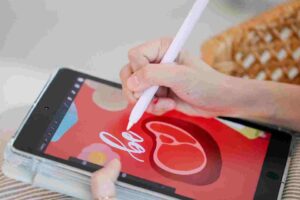Digital artwork is taking the contemporary art world by storm, and it’s not hard to see why. With the rise of technology and the internet, digital painting has become more accessible and accepted. In this article, we will explore the historical evolution of digital artwork, the contemporary art world’s acceptance of it, the advantages of creating digital artwork, the tools used in making it, the process of creating it, the techniques used in it, and the future of digital artwork in the art world.
Digital artwork is a type of art that is created using digital technology. It can be made using a computer, tablet, or smartphone, ranging from simple drawings to complex 3D animations. It can be created using various software programs, such as Adobe Photoshop, Illustrator, and Procreate. The possibilities are endless with digital artwork, as it allows artists to experiment and create without the limitations of traditional art materials.
The Historical Evolution of Digital Art
Digital art has been around since the 1950s, but it wasn’t until the 1980s that it began to gain recognition in the art world. During this time, artists began experimenting with computer-generated images and digital manipulation of photographs. The first digital art exhibition was held in 1989 at the Computer Graphics Museum in California. Since then, digital artwork has continued to evolve and gain acceptance in the art world.
Digital art has come a long way since its early beginnings and is now widely accepted in contemporary art. Many museums and galleries have dedicated exhibitions to digital art, showcasing the work of some of the most talented digital artists in the world. Accepting digital artwork has also created new art forms, such as digital installations and interactive art.
The Advantages of Creating Digital Art
One of the most significant advantages of digital art is the ability to experiment and quickly make changes. With traditional art materials, mistakes can be costly and time-consuming to fix. But in digital art, artists can easily undo mistakes and try new things without worrying about wasting materials. Another advantage of creating digital artwork is sharing it easily with others, allowing artists to reach a wider audience.
Tools Used in Creating Digital Artwork

Many tools are used in creating digital art, and the choice of instrument depends on the artist’s preferences and expertise. Some of the most popular tools used in digital artwork include graphics tablets, digital cameras, and software programs such as Adobe Photoshop, Illustrator, and Procreate. Graphics tablets allow artists to draw directly onto the computer screen, while digital cameras can be used to capture images that can be manipulated digitally. Software programs allow artists to manipulate images and create digital art from scratch.
The Process of Creating Digital Artwork
The process of creating digital artwork is similar to that of traditional artwork, with a few key differences. The first step is to choose the tool or software program that will be used to create the artwork. Next, the artist will sketch their ideas and begin creating the artwork. Once the artwork is complete, the artist will make any necessary adjustments and save the file digitally. The final step is to share the artwork with others, either online or in a physical exhibition.
Techniques Used in Digital Artwork

Many techniques are used in digital artwork, and the choice of method depends on the artist’s style and preferences. Some popular designs include photo manipulation, digital painting, and 3D modeling. Photo manipulation involves using software programs to alter photographs, while digital images involve creating artwork from scratch using a graphics tablet and software program. 3D modelling consists in creating 3D objects using software programs and can be used in various applications, such as video games and animation.
The Future of Digital Art
The future of digital art in the world is bright as technology continues to evolve and new techniques and tools are developed. Digital painting has proven valuable to contemporary art and will likely continue gaining acceptance and recognition. As more artists experiment with digital art, new art forms and techniques will be developed, further expanding the possibilities of digital artwork in the art world.
Conclusion

Digital artwork has come a long way since its early beginnings, and it is now a valuable and accepted addition to the contemporary art world. It allows artists to experiment and create without the limitations of traditional art materials and can be shared easily with a broader audience. With the continued evolution of technology and the development of new techniques and tools, the possibilities of digital artwork in the art world are endless. It is an exciting time for digital artists and art enthusiasts alike as the world of digital art continues to evolve and grow.

